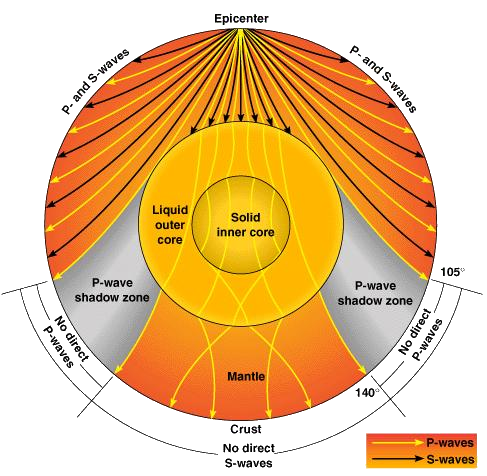Seismic Waves and the Earth's Structure
Recall that P waves can travel through liquids whereas S waves cannot. When an earthquake occurs, both S and P waves radiate from the focus. Because the rocks get denser as depth increases the path of the waves suffers refraction - it bends - see the diagram. The S waves are detected over a little more than one-quarter of the earth's surface (103° to be exact) . Beyond that, no S waves are seen. This tells us then that for some reason, the S waves do not travel through the core. Hence, the core must be made of liquid. A large, quiet S wave shadow zone is created on the other side of the Earth. In contrast, the P waves are detected on the opposite side of the Earth as the focus. A shadow zone from 103° to 142° does exist from P waves, though. Since waves are detected, then not, then reappear again, something inside the Earth must be bending the P waves and bending them towards the normal. From this evidence using waves, we can tell that part of the core is liquid (S wave shadow) and part (the inner part) must be solid with a different density than the rest of the surrounding material (P wave shadow zone due to refraction). In actuality, the inner core is thought to be made of solid iron and nickel.
|
Follow me...
|


 Seismic
waves also tell us a great deal about the core.
Seismic
waves also tell us a great deal about the core. 


